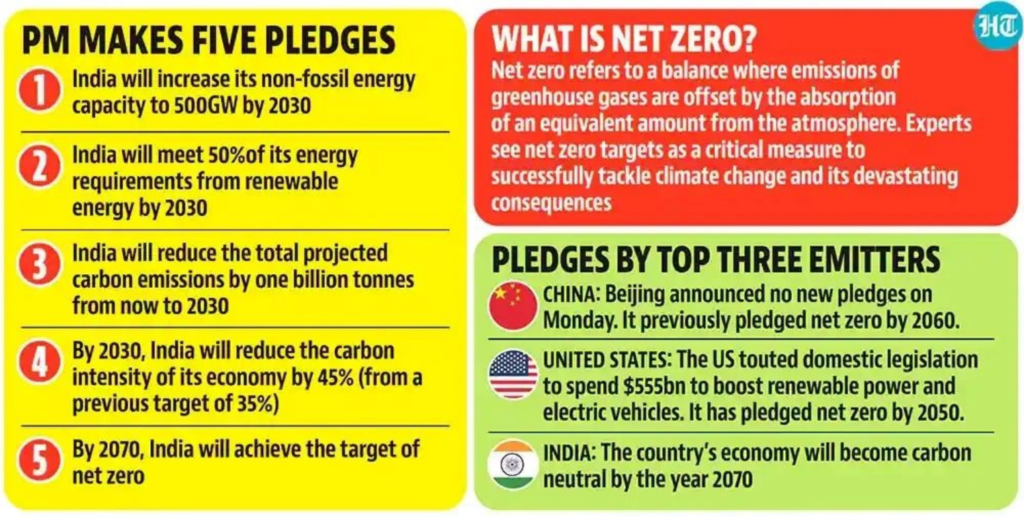DRAFTED BY SHUBHAM SHARMA

CONTEXT:
India has promised to cut its emissions to net-zero by 2070. This was stated by the Prime Minister of India during COP 26 summit in Glasgow, United Kingdom.
What is NET ZERO?
Net-zero, which is also referred to as carbon-neutrality. It is a state in which a country’s emissions are compensated by the absorption and removal of greenhouse gases from the atmosphere.
We will achieve net-zero emissions through the process of carbon removal that is by removing GHGs from the atmosphere.
human-caused emissions — like those from fossil-fueled vehicles and factories — should be reduced as close to zero as possible. Any remaining GHGs would be balanced with an equivalent amount of carbon removal, for example by restoring forests or through direct air capture and storage (DACS) technology.
The concept of NET ZERO is similar to CLIMATE NEUTRALITY.
It is even possible for a country to have negative emissions if the absorption and removal exceed the actual emissions. A good example is Bhutan which is often described as carbon-negative because it absorbs more than it emits.
Under the Paris Agreement, countries agreed to limit warming well below 2 degrees C (3.6 degrees F) and ideally 1.5 degrees C (2.7 degrees F). Climate impacts that are already unfolding around the world, even with only 1.1 degrees C (2 degrees F) of warming show the urgency of minimizing temperature increase.

How do we Achieve Net-Zero Emissions?
- Absorption of the emissions can be increased by creating more carbon sinks such as forests.
- Policy, technology, and behavior need to shift across the board. For example, in pathways to 1.5 degrees C, renewables are projected to supply 70-85% of electricity by 2050.
- Improving the efficiency of food production, changing dietary choices, halting deforestation, restoring degraded lands, and reducing food loss and waste also have significant potential to reduce emissions.
- The good news is that most of the technologies we need are available and they are increasingly cost-competitive with high-carbon alternatives. Solar and wind now provide the cheapest power for 67% of the world.
- Major emitters (such as the United States, the European Union, and China) should reach net-zero GHG emissions by 2050, or it will be hard for the math to work regardless of what other countries do.
